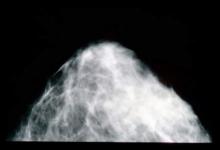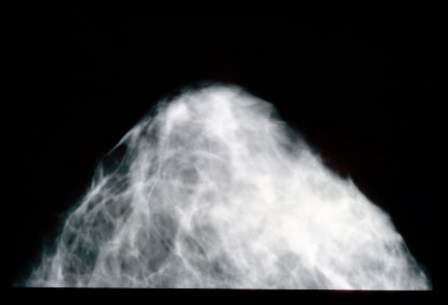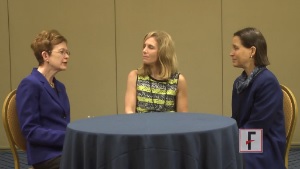User login
CDC Parenting Essentials: Rules and Structure
As part of the “Essentials for Parenting Toddlers and Preschoolers” series, the Centers for Disease Control and Prevention has included a subsection titled “Creating Structure and Rules” to help parents establish reliable routines for young children.
According to the CDC, consistency and follow-through are key when establishing structure and rules for toddlers and preschoolers. This helps children understand which behaviors are acceptable and which are unacceptable.
Breaking rules is a normal part of a child’s development and a way for them to test limits and learn about the world, but parents must establish firm consequences for behaviors that may be inappropriate or dangerous, and be consistent in their enforcement of rules.
The CDC offers these tips for establishing and enforcing rules and routines with toddlers:
1. Identify the rules. Be specific about rules, and avoid vague descriptions such as “be good.” Start with one or two and add additional rules only as needed, so as not to be confusing or overwhelming.
2. Explain the rules. Remind children of when, where, and why they exist. Use charts or pictures if needed to help explain and remind them.
3. Follow the rules. Set an example for children by requiring all family members to participate.
4. Use consequences. Use positive consequences such as praise to show your child you like that they are following the rules or routine. Use negative consequences, such as time out, to dissuade the child from breaking rules.
To read more about setting rules and routines with young children, visit the CDC website. To view examples of how to use visual aids to help create structure, watch the video “Charts and Graphs: Creating Structure and Rules.”
As part of the “Essentials for Parenting Toddlers and Preschoolers” series, the Centers for Disease Control and Prevention has included a subsection titled “Creating Structure and Rules” to help parents establish reliable routines for young children.
According to the CDC, consistency and follow-through are key when establishing structure and rules for toddlers and preschoolers. This helps children understand which behaviors are acceptable and which are unacceptable.
Breaking rules is a normal part of a child’s development and a way for them to test limits and learn about the world, but parents must establish firm consequences for behaviors that may be inappropriate or dangerous, and be consistent in their enforcement of rules.
The CDC offers these tips for establishing and enforcing rules and routines with toddlers:
1. Identify the rules. Be specific about rules, and avoid vague descriptions such as “be good.” Start with one or two and add additional rules only as needed, so as not to be confusing or overwhelming.
2. Explain the rules. Remind children of when, where, and why they exist. Use charts or pictures if needed to help explain and remind them.
3. Follow the rules. Set an example for children by requiring all family members to participate.
4. Use consequences. Use positive consequences such as praise to show your child you like that they are following the rules or routine. Use negative consequences, such as time out, to dissuade the child from breaking rules.
To read more about setting rules and routines with young children, visit the CDC website. To view examples of how to use visual aids to help create structure, watch the video “Charts and Graphs: Creating Structure and Rules.”
As part of the “Essentials for Parenting Toddlers and Preschoolers” series, the Centers for Disease Control and Prevention has included a subsection titled “Creating Structure and Rules” to help parents establish reliable routines for young children.
According to the CDC, consistency and follow-through are key when establishing structure and rules for toddlers and preschoolers. This helps children understand which behaviors are acceptable and which are unacceptable.
Breaking rules is a normal part of a child’s development and a way for them to test limits and learn about the world, but parents must establish firm consequences for behaviors that may be inappropriate or dangerous, and be consistent in their enforcement of rules.
The CDC offers these tips for establishing and enforcing rules and routines with toddlers:
1. Identify the rules. Be specific about rules, and avoid vague descriptions such as “be good.” Start with one or two and add additional rules only as needed, so as not to be confusing or overwhelming.
2. Explain the rules. Remind children of when, where, and why they exist. Use charts or pictures if needed to help explain and remind them.
3. Follow the rules. Set an example for children by requiring all family members to participate.
4. Use consequences. Use positive consequences such as praise to show your child you like that they are following the rules or routine. Use negative consequences, such as time out, to dissuade the child from breaking rules.
To read more about setting rules and routines with young children, visit the CDC website. To view examples of how to use visual aids to help create structure, watch the video “Charts and Graphs: Creating Structure and Rules.”
CDC Parenting Essentials: Discipline
As part of its “Essentials for Parenting Toddlers and Preschoolers” series, the Centers for Disease Control and Prevention has released some recommendations for parents on how to use discipline and consequences to address unwanted behavior in young children.
What happens immediately after a child’s behaviors – whether good or bad – can make the action more or less likely to occur in the future, according to the CDC. This is why appropriate consequences are so important.
While praise and other types of positive consequences may be used to reward desired behavior, parents should also know when to use different types of discipline, or negative consequences, when a child has misbehaved in some way.
The CDC suggests that following negative consequences be used to discipline bad behavior and make those behaviors less likely to happen again:
1. Ignoring. Taking attention away from a child who is whining or throwing a tantrum can decrease the likelihood of the behavior continuing. When using ignoring as a form of discipline, avoid all eye contact, conversation, and attempts to get your attention.
2. Distraction. Using distractions such as games and toys can stop unwanted behaviors by redirecting the child’s focus elsewhere.
3. Natural consequences. In some situations, the negative consequences that naturally occur as the result of a bad behavior may serve as punishment in itself. For instance, if a child repeatedly bangs a toy and it breaks, the child has learned from his or her mistakes by seeing the consequence firsthand. The only caveat to allowing natural consequences to happen is to be careful that this does not put the child in danger.
4. Delay of a privilege. This method may involve taking away toys that are not handled carefully or not allowing the child to play outside until they have cleaned up their toys. This teaches the child about logical consequences that are directly related to their actions.
5. Time-Out. This involves removing the child from anything that may be distracting or hold his or her attention.
To learn more about effective discipline, visit the CDC website. To view examples of how to use discipline with toddlers, watch the video “How to Use Discipline and Consequences.”
As part of its “Essentials for Parenting Toddlers and Preschoolers” series, the Centers for Disease Control and Prevention has released some recommendations for parents on how to use discipline and consequences to address unwanted behavior in young children.
What happens immediately after a child’s behaviors – whether good or bad – can make the action more or less likely to occur in the future, according to the CDC. This is why appropriate consequences are so important.
While praise and other types of positive consequences may be used to reward desired behavior, parents should also know when to use different types of discipline, or negative consequences, when a child has misbehaved in some way.
The CDC suggests that following negative consequences be used to discipline bad behavior and make those behaviors less likely to happen again:
1. Ignoring. Taking attention away from a child who is whining or throwing a tantrum can decrease the likelihood of the behavior continuing. When using ignoring as a form of discipline, avoid all eye contact, conversation, and attempts to get your attention.
2. Distraction. Using distractions such as games and toys can stop unwanted behaviors by redirecting the child’s focus elsewhere.
3. Natural consequences. In some situations, the negative consequences that naturally occur as the result of a bad behavior may serve as punishment in itself. For instance, if a child repeatedly bangs a toy and it breaks, the child has learned from his or her mistakes by seeing the consequence firsthand. The only caveat to allowing natural consequences to happen is to be careful that this does not put the child in danger.
4. Delay of a privilege. This method may involve taking away toys that are not handled carefully or not allowing the child to play outside until they have cleaned up their toys. This teaches the child about logical consequences that are directly related to their actions.
5. Time-Out. This involves removing the child from anything that may be distracting or hold his or her attention.
To learn more about effective discipline, visit the CDC website. To view examples of how to use discipline with toddlers, watch the video “How to Use Discipline and Consequences.”
As part of its “Essentials for Parenting Toddlers and Preschoolers” series, the Centers for Disease Control and Prevention has released some recommendations for parents on how to use discipline and consequences to address unwanted behavior in young children.
What happens immediately after a child’s behaviors – whether good or bad – can make the action more or less likely to occur in the future, according to the CDC. This is why appropriate consequences are so important.
While praise and other types of positive consequences may be used to reward desired behavior, parents should also know when to use different types of discipline, or negative consequences, when a child has misbehaved in some way.
The CDC suggests that following negative consequences be used to discipline bad behavior and make those behaviors less likely to happen again:
1. Ignoring. Taking attention away from a child who is whining or throwing a tantrum can decrease the likelihood of the behavior continuing. When using ignoring as a form of discipline, avoid all eye contact, conversation, and attempts to get your attention.
2. Distraction. Using distractions such as games and toys can stop unwanted behaviors by redirecting the child’s focus elsewhere.
3. Natural consequences. In some situations, the negative consequences that naturally occur as the result of a bad behavior may serve as punishment in itself. For instance, if a child repeatedly bangs a toy and it breaks, the child has learned from his or her mistakes by seeing the consequence firsthand. The only caveat to allowing natural consequences to happen is to be careful that this does not put the child in danger.
4. Delay of a privilege. This method may involve taking away toys that are not handled carefully or not allowing the child to play outside until they have cleaned up their toys. This teaches the child about logical consequences that are directly related to their actions.
5. Time-Out. This involves removing the child from anything that may be distracting or hold his or her attention.
To learn more about effective discipline, visit the CDC website. To view examples of how to use discipline with toddlers, watch the video “How to Use Discipline and Consequences.”
CDC Parenting Essentials: Time-Out
The last portion of the Centers for Disease Control and Prevention’s online resource, “Essentials for Parenting Toddlers and Preschoolers,” focuses on using time-out as a form of discipline, and offers guidance on how and when this method should be used with young children.
When used correctly, time-out can be very effective in stopping undesired behavior, because children dislike being bored, and time-out removes the child from all sources of fun, activity, and attention.
So when should a parent use time-out?
The CDC recommends using time-out in the following situations:
1. The child has done something dangerous, such as running in the street.
2. The child has done something harmful to another child, such as fighting or biting.
3. The child has broken a family rule.
4. The child continues the misbehavior after a warning.
A warning can be used the first time the child misbehaves, and the time-out may be carried out if the child continues the unwanted behavior. CDC offers the following steps parents can take when using time-out:
1. Give a warning. Let the child know what he has done wrong, and that if he does not stop, he or she will be put in a time-out.
2. Explain why. Calmly tell the child why they are in time-out. Do not argue, scold, or talk to your child when they are sitting in time out.
3. Administer the time-out. If the child repeatedly moves or leaves the time-out space, you may need to be persistent in putting him or her back in the time-out space. Limit your interaction as much as possible when doing this.
4. End time-out. A good rule of thumb is to have the child sit in time-out for 1 minute per year of his or her age. For instance, a 4-year-old would sit in time-out for 4 minutes. Make sure your child has been quiet for at least 5 seconds at the end of time-out, and remind them what behavior you expect.
5. Praise the next good behavior the child does. This gives him or her a chance to follow directions properly.
For more information on using time out, visit the CDC website. To view examples of how to use this form of discipline, watch the video “How to Use Time-Out.”
The last portion of the Centers for Disease Control and Prevention’s online resource, “Essentials for Parenting Toddlers and Preschoolers,” focuses on using time-out as a form of discipline, and offers guidance on how and when this method should be used with young children.
When used correctly, time-out can be very effective in stopping undesired behavior, because children dislike being bored, and time-out removes the child from all sources of fun, activity, and attention.
So when should a parent use time-out?
The CDC recommends using time-out in the following situations:
1. The child has done something dangerous, such as running in the street.
2. The child has done something harmful to another child, such as fighting or biting.
3. The child has broken a family rule.
4. The child continues the misbehavior after a warning.
A warning can be used the first time the child misbehaves, and the time-out may be carried out if the child continues the unwanted behavior. CDC offers the following steps parents can take when using time-out:
1. Give a warning. Let the child know what he has done wrong, and that if he does not stop, he or she will be put in a time-out.
2. Explain why. Calmly tell the child why they are in time-out. Do not argue, scold, or talk to your child when they are sitting in time out.
3. Administer the time-out. If the child repeatedly moves or leaves the time-out space, you may need to be persistent in putting him or her back in the time-out space. Limit your interaction as much as possible when doing this.
4. End time-out. A good rule of thumb is to have the child sit in time-out for 1 minute per year of his or her age. For instance, a 4-year-old would sit in time-out for 4 minutes. Make sure your child has been quiet for at least 5 seconds at the end of time-out, and remind them what behavior you expect.
5. Praise the next good behavior the child does. This gives him or her a chance to follow directions properly.
For more information on using time out, visit the CDC website. To view examples of how to use this form of discipline, watch the video “How to Use Time-Out.”
The last portion of the Centers for Disease Control and Prevention’s online resource, “Essentials for Parenting Toddlers and Preschoolers,” focuses on using time-out as a form of discipline, and offers guidance on how and when this method should be used with young children.
When used correctly, time-out can be very effective in stopping undesired behavior, because children dislike being bored, and time-out removes the child from all sources of fun, activity, and attention.
So when should a parent use time-out?
The CDC recommends using time-out in the following situations:
1. The child has done something dangerous, such as running in the street.
2. The child has done something harmful to another child, such as fighting or biting.
3. The child has broken a family rule.
4. The child continues the misbehavior after a warning.
A warning can be used the first time the child misbehaves, and the time-out may be carried out if the child continues the unwanted behavior. CDC offers the following steps parents can take when using time-out:
1. Give a warning. Let the child know what he has done wrong, and that if he does not stop, he or she will be put in a time-out.
2. Explain why. Calmly tell the child why they are in time-out. Do not argue, scold, or talk to your child when they are sitting in time out.
3. Administer the time-out. If the child repeatedly moves or leaves the time-out space, you may need to be persistent in putting him or her back in the time-out space. Limit your interaction as much as possible when doing this.
4. End time-out. A good rule of thumb is to have the child sit in time-out for 1 minute per year of his or her age. For instance, a 4-year-old would sit in time-out for 4 minutes. Make sure your child has been quiet for at least 5 seconds at the end of time-out, and remind them what behavior you expect.
5. Praise the next good behavior the child does. This gives him or her a chance to follow directions properly.
For more information on using time out, visit the CDC website. To view examples of how to use this form of discipline, watch the video “How to Use Time-Out.”
CDC Parenting Essentials: Communication
The Centers for Disease Control and Prevention has released “Essentials for Parenting Toddlers and Preschoolers,” an online guide for parents of children 2-4 years of age. The free online resource provides parents with information and recommendations for how to address various concerns that may arise in parenting young children.
The first section in the series, “Communicating with Your Child,” offers resources for parents to develop positive, open communication with toddlers and foster a stronger relationship with children. These skills will come in handy when the child is older and parents may wish to discuss difficult topics such as drugs and alcohol, the CDC said.
According to the agency, praise and active listening are two essential skills parents can use when communicating with young children. They offer the following tips:
1. When a child does something right, praise the child. Praise can include actions such as positive verbal reinforcement, hugs, or high fives. This increases the likelihood that he or she will repeat the desired behavior. Likewise, to lessen negative behavior, you may choose to use negative attention such as yelling, correcting, or ignoring the behavior.
2. When a child is talking to you, give him or her your full attention. This will reassure the child that you care about what he or she has to say.
3. Designate time every day to talk and play with your child. This lets children know they are important and helps create a stronger bond.
To read more about effective communication skills with toddlers and preschoolers, visit the CDC website. To view examples of good communication, watch the video, “How to Use Positive Communication.”
The Centers for Disease Control and Prevention has released “Essentials for Parenting Toddlers and Preschoolers,” an online guide for parents of children 2-4 years of age. The free online resource provides parents with information and recommendations for how to address various concerns that may arise in parenting young children.
The first section in the series, “Communicating with Your Child,” offers resources for parents to develop positive, open communication with toddlers and foster a stronger relationship with children. These skills will come in handy when the child is older and parents may wish to discuss difficult topics such as drugs and alcohol, the CDC said.
According to the agency, praise and active listening are two essential skills parents can use when communicating with young children. They offer the following tips:
1. When a child does something right, praise the child. Praise can include actions such as positive verbal reinforcement, hugs, or high fives. This increases the likelihood that he or she will repeat the desired behavior. Likewise, to lessen negative behavior, you may choose to use negative attention such as yelling, correcting, or ignoring the behavior.
2. When a child is talking to you, give him or her your full attention. This will reassure the child that you care about what he or she has to say.
3. Designate time every day to talk and play with your child. This lets children know they are important and helps create a stronger bond.
To read more about effective communication skills with toddlers and preschoolers, visit the CDC website. To view examples of good communication, watch the video, “How to Use Positive Communication.”
The Centers for Disease Control and Prevention has released “Essentials for Parenting Toddlers and Preschoolers,” an online guide for parents of children 2-4 years of age. The free online resource provides parents with information and recommendations for how to address various concerns that may arise in parenting young children.
The first section in the series, “Communicating with Your Child,” offers resources for parents to develop positive, open communication with toddlers and foster a stronger relationship with children. These skills will come in handy when the child is older and parents may wish to discuss difficult topics such as drugs and alcohol, the CDC said.
According to the agency, praise and active listening are two essential skills parents can use when communicating with young children. They offer the following tips:
1. When a child does something right, praise the child. Praise can include actions such as positive verbal reinforcement, hugs, or high fives. This increases the likelihood that he or she will repeat the desired behavior. Likewise, to lessen negative behavior, you may choose to use negative attention such as yelling, correcting, or ignoring the behavior.
2. When a child is talking to you, give him or her your full attention. This will reassure the child that you care about what he or she has to say.
3. Designate time every day to talk and play with your child. This lets children know they are important and helps create a stronger bond.
To read more about effective communication skills with toddlers and preschoolers, visit the CDC website. To view examples of good communication, watch the video, “How to Use Positive Communication.”
FDA approves Trumenba vaccine for serogroup B meningitis
Trumenba, the first vaccine authorized in the United States to prevent meningococcal disease caused by Neisseria meningitidis serogroup B, has been approved by the Food and Drug Administration, the agency announced Oct. 29. The vaccine is approved for use in individuals aged 10-25 years.
Trumenba was approved in less than 6 months through the FDA’s accelerated approval program after recent outbreaks of serogroup B infection on U.S. college campuses, including Princeton University and the University of California, Santa Barbara, raised concerns about the urgent need for prevention, Dr. Karen Midthun, director of FDA’s Center for Biologics Evaluation and Research, said in a media briefing.
Trumenba was used in response to both outbreaks under special FDA permission that allows for investigational agents to be administered in urgent circumstances. Before its approval in the United States, the vaccine was licensed for use in Europe, Canada, and Australia.
Until now, meningitis vaccines available in the U.S. were meningococcal polysaccharide vaccine (Menomune) and meningococcal conjugate vaccine (Menactra, Menveo and MenHibrix), which only protect against four of the five disease serogroups: A, C, Y, and W, according to the Centers for Disease Control and Prevention.
Out of approximately 500 cases of meningococcal disease in 2012, 160 were caused by serogroup B, said Dr. Midthun.
Three studies to evaluate Trumenba’s efficacy were conducted in about 2,800 adolescents in the United States and Europe, the FDA said. Of participants who received three doses of the vaccine, 82% had antibodies that eliminated four different serogroup B strains, compared with less than 1% before receiving Trumenba.
Trumenba is manufactured by Wyeth Pharmaceuticals. For important safety information, please visit their website.
Trumenba, the first vaccine authorized in the United States to prevent meningococcal disease caused by Neisseria meningitidis serogroup B, has been approved by the Food and Drug Administration, the agency announced Oct. 29. The vaccine is approved for use in individuals aged 10-25 years.
Trumenba was approved in less than 6 months through the FDA’s accelerated approval program after recent outbreaks of serogroup B infection on U.S. college campuses, including Princeton University and the University of California, Santa Barbara, raised concerns about the urgent need for prevention, Dr. Karen Midthun, director of FDA’s Center for Biologics Evaluation and Research, said in a media briefing.
Trumenba was used in response to both outbreaks under special FDA permission that allows for investigational agents to be administered in urgent circumstances. Before its approval in the United States, the vaccine was licensed for use in Europe, Canada, and Australia.
Until now, meningitis vaccines available in the U.S. were meningococcal polysaccharide vaccine (Menomune) and meningococcal conjugate vaccine (Menactra, Menveo and MenHibrix), which only protect against four of the five disease serogroups: A, C, Y, and W, according to the Centers for Disease Control and Prevention.
Out of approximately 500 cases of meningococcal disease in 2012, 160 were caused by serogroup B, said Dr. Midthun.
Three studies to evaluate Trumenba’s efficacy were conducted in about 2,800 adolescents in the United States and Europe, the FDA said. Of participants who received three doses of the vaccine, 82% had antibodies that eliminated four different serogroup B strains, compared with less than 1% before receiving Trumenba.
Trumenba is manufactured by Wyeth Pharmaceuticals. For important safety information, please visit their website.
Trumenba, the first vaccine authorized in the United States to prevent meningococcal disease caused by Neisseria meningitidis serogroup B, has been approved by the Food and Drug Administration, the agency announced Oct. 29. The vaccine is approved for use in individuals aged 10-25 years.
Trumenba was approved in less than 6 months through the FDA’s accelerated approval program after recent outbreaks of serogroup B infection on U.S. college campuses, including Princeton University and the University of California, Santa Barbara, raised concerns about the urgent need for prevention, Dr. Karen Midthun, director of FDA’s Center for Biologics Evaluation and Research, said in a media briefing.
Trumenba was used in response to both outbreaks under special FDA permission that allows for investigational agents to be administered in urgent circumstances. Before its approval in the United States, the vaccine was licensed for use in Europe, Canada, and Australia.
Until now, meningitis vaccines available in the U.S. were meningococcal polysaccharide vaccine (Menomune) and meningococcal conjugate vaccine (Menactra, Menveo and MenHibrix), which only protect against four of the five disease serogroups: A, C, Y, and W, according to the Centers for Disease Control and Prevention.
Out of approximately 500 cases of meningococcal disease in 2012, 160 were caused by serogroup B, said Dr. Midthun.
Three studies to evaluate Trumenba’s efficacy were conducted in about 2,800 adolescents in the United States and Europe, the FDA said. Of participants who received three doses of the vaccine, 82% had antibodies that eliminated four different serogroup B strains, compared with less than 1% before receiving Trumenba.
Trumenba is manufactured by Wyeth Pharmaceuticals. For important safety information, please visit their website.
FROM AN FDA MEDIA BRIEFING
How to find certified mammography facilities
The Food and Drug Administration has released an online resource to help consumers find FDA-certified mammography facilities by location, the agency announced Oct. 29.
The FDA hopes that women will continue to keep screening and prevention in mind well beyond Breast Cancer Awareness Month, they said. Mammograms are the best way to screen for cancer early, because they can help detect lumps that may be too small for a patient or physician to find during a self-breast exam.
The FDA conducts annual inspections of mammography facilities to ensure they meet standards for equipment and staff training under the Mammography Quality Standards Act. Facilities must be FDA-certified to legally perform mammogram services in the United States.
The agency has also recently approved new 3-D imaging technology that creates cross-sectional images to help doctors evaluate dense tissue and that may even find hidden tumors, they said. The FDA warns that other tools such as thermograms and nipple aspirate tests are not substitutes for mammograms.
The FDA has more information about breast cancer screening at its website, as well as a list of certified mammography facility near you.
The Food and Drug Administration has released an online resource to help consumers find FDA-certified mammography facilities by location, the agency announced Oct. 29.
The FDA hopes that women will continue to keep screening and prevention in mind well beyond Breast Cancer Awareness Month, they said. Mammograms are the best way to screen for cancer early, because they can help detect lumps that may be too small for a patient or physician to find during a self-breast exam.
The FDA conducts annual inspections of mammography facilities to ensure they meet standards for equipment and staff training under the Mammography Quality Standards Act. Facilities must be FDA-certified to legally perform mammogram services in the United States.
The agency has also recently approved new 3-D imaging technology that creates cross-sectional images to help doctors evaluate dense tissue and that may even find hidden tumors, they said. The FDA warns that other tools such as thermograms and nipple aspirate tests are not substitutes for mammograms.
The FDA has more information about breast cancer screening at its website, as well as a list of certified mammography facility near you.
The Food and Drug Administration has released an online resource to help consumers find FDA-certified mammography facilities by location, the agency announced Oct. 29.
The FDA hopes that women will continue to keep screening and prevention in mind well beyond Breast Cancer Awareness Month, they said. Mammograms are the best way to screen for cancer early, because they can help detect lumps that may be too small for a patient or physician to find during a self-breast exam.
The FDA conducts annual inspections of mammography facilities to ensure they meet standards for equipment and staff training under the Mammography Quality Standards Act. Facilities must be FDA-certified to legally perform mammogram services in the United States.
The agency has also recently approved new 3-D imaging technology that creates cross-sectional images to help doctors evaluate dense tissue and that may even find hidden tumors, they said. The FDA warns that other tools such as thermograms and nipple aspirate tests are not substitutes for mammograms.
The FDA has more information about breast cancer screening at its website, as well as a list of certified mammography facility near you.
Dallas nurse Ebola free, discharged from NIH hospital
Nina Pham, the Dallas nurse who contracted the Ebola virus while caring for patient Thomas Eric Duncan, is now free of the virus and is being discharged from the NIH Clinical Center in Bethesda where she received treatment, the agency announced in a press conference October 24.
Dr. Anthony S. Fauci, director of the National Institute of Allergy and Infectious Diseases, said their medical team confirmed Ms. Pham was Ebola-free after receiving five consecutive negative polymerase chain reaction tests for the virus.
He said it is impossible to determine a specific “turning point” at which she started to recover. Ms. Pham did not receive any experimental drugs during treatment, he said.
“One of the most important things is to give them the kind of general medical support to allow their own body to fight off the virus and essentially get rid of the virus,” Dr. Fauci said.
“It has been a great pleasure and privilege for me and staff here to have the opportunity to treat and get to know this courageous and lovely person,” he added. “She as an individual represents nurses and health care workers who put themselves on the line to care for those in need.”
Dr. Fauci stressed the importance of educating the public about the virus, and that the risk for health care workers is significantly higher than it is for the general public. “I repeat what we’ve been saying – the way you get Ebola is by direct contact with the body fluids of an ill individual,” he said. “That is important to point out.”
Though there is currently no vaccine for Ebola, Dr. Fauci said he hopes large, randomized efficacy trials can begin in 2015.
Ms. Pham was first diagnosed with the Ebola virus at Texas Presbyterian Hospital on Oct. 12. She had helped care for Mr. Duncan while he was at the Dallas hospital; he died from the infection Oct. 8. Ms. Pham was moved to the NIH Special Clinical Studies Unit in Bethesda, Md., on Oct.16.
In the conference, she thanked her family, friends, and the NIH medical team for their support, as well as Ebola survivor Dr. Kent Brantly, who donated plasma during her recovery.
“I feel fortunate and blessed to be standing here today,” she said. “This illness has been very stressful and challenging for me and my family. Although I no longer have Ebola, I know it may be a while before I have my strength back.”
Ms. Pham said she plans to resume a “normal life” upon her return to Texas.
Emory University in Atlanta reported on Oct. 24 that Amber Vinson, the other Dallas nurse who was infected, is now free of the virus, according to blood tests.
A new case – in a doctor who returned to the United States after caring for Ebola patients in Guinea – was confirmed by the CDC on Oct. 23 in New York.
Mali’s Ministry of Health confirmed the country’s first case of Ebola on Oct. 23, according to a statement issued by the World Health Organization. The patient is a 2-year-old girl recently arrived in Mali from Guinea.
Nina Pham, the Dallas nurse who contracted the Ebola virus while caring for patient Thomas Eric Duncan, is now free of the virus and is being discharged from the NIH Clinical Center in Bethesda where she received treatment, the agency announced in a press conference October 24.
Dr. Anthony S. Fauci, director of the National Institute of Allergy and Infectious Diseases, said their medical team confirmed Ms. Pham was Ebola-free after receiving five consecutive negative polymerase chain reaction tests for the virus.
He said it is impossible to determine a specific “turning point” at which she started to recover. Ms. Pham did not receive any experimental drugs during treatment, he said.
“One of the most important things is to give them the kind of general medical support to allow their own body to fight off the virus and essentially get rid of the virus,” Dr. Fauci said.
“It has been a great pleasure and privilege for me and staff here to have the opportunity to treat and get to know this courageous and lovely person,” he added. “She as an individual represents nurses and health care workers who put themselves on the line to care for those in need.”
Dr. Fauci stressed the importance of educating the public about the virus, and that the risk for health care workers is significantly higher than it is for the general public. “I repeat what we’ve been saying – the way you get Ebola is by direct contact with the body fluids of an ill individual,” he said. “That is important to point out.”
Though there is currently no vaccine for Ebola, Dr. Fauci said he hopes large, randomized efficacy trials can begin in 2015.
Ms. Pham was first diagnosed with the Ebola virus at Texas Presbyterian Hospital on Oct. 12. She had helped care for Mr. Duncan while he was at the Dallas hospital; he died from the infection Oct. 8. Ms. Pham was moved to the NIH Special Clinical Studies Unit in Bethesda, Md., on Oct.16.
In the conference, she thanked her family, friends, and the NIH medical team for their support, as well as Ebola survivor Dr. Kent Brantly, who donated plasma during her recovery.
“I feel fortunate and blessed to be standing here today,” she said. “This illness has been very stressful and challenging for me and my family. Although I no longer have Ebola, I know it may be a while before I have my strength back.”
Ms. Pham said she plans to resume a “normal life” upon her return to Texas.
Emory University in Atlanta reported on Oct. 24 that Amber Vinson, the other Dallas nurse who was infected, is now free of the virus, according to blood tests.
A new case – in a doctor who returned to the United States after caring for Ebola patients in Guinea – was confirmed by the CDC on Oct. 23 in New York.
Mali’s Ministry of Health confirmed the country’s first case of Ebola on Oct. 23, according to a statement issued by the World Health Organization. The patient is a 2-year-old girl recently arrived in Mali from Guinea.
Nina Pham, the Dallas nurse who contracted the Ebola virus while caring for patient Thomas Eric Duncan, is now free of the virus and is being discharged from the NIH Clinical Center in Bethesda where she received treatment, the agency announced in a press conference October 24.
Dr. Anthony S. Fauci, director of the National Institute of Allergy and Infectious Diseases, said their medical team confirmed Ms. Pham was Ebola-free after receiving five consecutive negative polymerase chain reaction tests for the virus.
He said it is impossible to determine a specific “turning point” at which she started to recover. Ms. Pham did not receive any experimental drugs during treatment, he said.
“One of the most important things is to give them the kind of general medical support to allow their own body to fight off the virus and essentially get rid of the virus,” Dr. Fauci said.
“It has been a great pleasure and privilege for me and staff here to have the opportunity to treat and get to know this courageous and lovely person,” he added. “She as an individual represents nurses and health care workers who put themselves on the line to care for those in need.”
Dr. Fauci stressed the importance of educating the public about the virus, and that the risk for health care workers is significantly higher than it is for the general public. “I repeat what we’ve been saying – the way you get Ebola is by direct contact with the body fluids of an ill individual,” he said. “That is important to point out.”
Though there is currently no vaccine for Ebola, Dr. Fauci said he hopes large, randomized efficacy trials can begin in 2015.
Ms. Pham was first diagnosed with the Ebola virus at Texas Presbyterian Hospital on Oct. 12. She had helped care for Mr. Duncan while he was at the Dallas hospital; he died from the infection Oct. 8. Ms. Pham was moved to the NIH Special Clinical Studies Unit in Bethesda, Md., on Oct.16.
In the conference, she thanked her family, friends, and the NIH medical team for their support, as well as Ebola survivor Dr. Kent Brantly, who donated plasma during her recovery.
“I feel fortunate and blessed to be standing here today,” she said. “This illness has been very stressful and challenging for me and my family. Although I no longer have Ebola, I know it may be a while before I have my strength back.”
Ms. Pham said she plans to resume a “normal life” upon her return to Texas.
Emory University in Atlanta reported on Oct. 24 that Amber Vinson, the other Dallas nurse who was infected, is now free of the virus, according to blood tests.
A new case – in a doctor who returned to the United States after caring for Ebola patients in Guinea – was confirmed by the CDC on Oct. 23 in New York.
Mali’s Ministry of Health confirmed the country’s first case of Ebola on Oct. 23, according to a statement issued by the World Health Organization. The patient is a 2-year-old girl recently arrived in Mali from Guinea.
FROM AN NIH PRESS CONFERENCE
Ability to shop for providers may lower claims payments
Giving patients access to a searchable pricing website to research costs for services resulted in a payment reduction for lab tests, advanced imaging services, and office visits, according to Christopher Whaley of Castlight Health and the University of California, Berkeley, and his colleagues. The report was published Oct. 21 in JAMA.
The reductions translated to a dollar difference of $3.45, $124.74, and $1.18, respectively.
Mr. Whaley and his colleagues looked at health care claims data on 502,949 individuals and their dependents from 253,757 households and 18 employers. Participants had access to a “price transparency platform,” Castlight Health, from 2010 to 2013, and could choose from a variety of insurance plans, including high-deductible, limited-network, and preferred-provider organization plans. The platform was accessible via web, mobile, and telephone, and employees were shown personalized out-of-pocket costs based on their plans when they searched for a medical intervention or test (JAMA 2014;312:1670-6 [doi:10.1001/jama.2014.13373]).
The researchers examined searches for laboratory tests, advanced imaging (MRI and CT scans), and office visits. Inpatient and emergency department claims were excluded because of the limited ability to shop for these services.
For each of the types of services studied, the investigators used claims data submitted by all 18 employers for a “pre-period” of up to 2 years before making the transparency platform available, and then for all subsequent periods.
Participants who had at least one claim for a service within 14 days of performing a search were classified as “searchers.” Those who did not perform a search before receiving a claim were “nonsearchers.”
In total, 304,247 individuals from 195,401 households received laboratory services, 37,384 individuals from 34,245 households received imaging services, and 446,290 individuals from 236,942 households visited a clinician.
Claims paid were lower for those who searched 14 days before receiving services. Adjusted payments were 14% lower for laboratory tests, 13% lower for imaging, and 1% lower for office visits.
Patients may have changed providers despite the “seemingly modest” savings because the less expensive physicians could have been of higher quality, or more convenient for the patient, Mr. Whaley and his colleagues noted. In addition, “forward-looking patients thought that savings per laboratory test would accumulate over time. Some patients, especially those with chronic conditions, need periodic laboratory tests or other medical services,” justifying the change.
The study was limited in a few ways. First, since searching is not randomly assigned, there may be unobserved factors that explain payment differences between searchers and nonsearchers. Second, it is unclear whether the findings can be generalized to patients who chose not to search, and further study is needed to investigate why some chose not to use the transparency platform, and why some who searched did not end up pursuing health services. Lastly, the study was not designed to evaluate quality of care, convenience, or other factors unrelated to price that may contribute to patients’ decision making.
All of the investigators reported relationships with Castlight Health. The study was supported by a grant from the National Institutes of Health.
The findings reported by Whaley and associates “indicate that price transparency works as economists would expect it would,” Dr. Uwe E. Reinhardt wrote in an editorial accompanying the study (JAMA 2014;312:1642-3 [doi:10.1001/jama.2014.14276]).
However, transparency in consumer health care costs is only useful while the market is competitive. “Greater transparency about prices and quality in health care are not helpful if the relevant market for health care is monopolized,” Dr. Reinhardt said.
This is an important yet often overlooked point, said Dr. Reinhardt, and one that providers and patients should keep in mind so they can best compare options and benefit from greater transparency in health care pricing.
Uwe E. Reinhardt, Ph.D, is professor of political economy at Princeton University.
The findings reported by Whaley and associates “indicate that price transparency works as economists would expect it would,” Dr. Uwe E. Reinhardt wrote in an editorial accompanying the study (JAMA 2014;312:1642-3 [doi:10.1001/jama.2014.14276]).
However, transparency in consumer health care costs is only useful while the market is competitive. “Greater transparency about prices and quality in health care are not helpful if the relevant market for health care is monopolized,” Dr. Reinhardt said.
This is an important yet often overlooked point, said Dr. Reinhardt, and one that providers and patients should keep in mind so they can best compare options and benefit from greater transparency in health care pricing.
Uwe E. Reinhardt, Ph.D, is professor of political economy at Princeton University.
The findings reported by Whaley and associates “indicate that price transparency works as economists would expect it would,” Dr. Uwe E. Reinhardt wrote in an editorial accompanying the study (JAMA 2014;312:1642-3 [doi:10.1001/jama.2014.14276]).
However, transparency in consumer health care costs is only useful while the market is competitive. “Greater transparency about prices and quality in health care are not helpful if the relevant market for health care is monopolized,” Dr. Reinhardt said.
This is an important yet often overlooked point, said Dr. Reinhardt, and one that providers and patients should keep in mind so they can best compare options and benefit from greater transparency in health care pricing.
Uwe E. Reinhardt, Ph.D, is professor of political economy at Princeton University.
Giving patients access to a searchable pricing website to research costs for services resulted in a payment reduction for lab tests, advanced imaging services, and office visits, according to Christopher Whaley of Castlight Health and the University of California, Berkeley, and his colleagues. The report was published Oct. 21 in JAMA.
The reductions translated to a dollar difference of $3.45, $124.74, and $1.18, respectively.
Mr. Whaley and his colleagues looked at health care claims data on 502,949 individuals and their dependents from 253,757 households and 18 employers. Participants had access to a “price transparency platform,” Castlight Health, from 2010 to 2013, and could choose from a variety of insurance plans, including high-deductible, limited-network, and preferred-provider organization plans. The platform was accessible via web, mobile, and telephone, and employees were shown personalized out-of-pocket costs based on their plans when they searched for a medical intervention or test (JAMA 2014;312:1670-6 [doi:10.1001/jama.2014.13373]).
The researchers examined searches for laboratory tests, advanced imaging (MRI and CT scans), and office visits. Inpatient and emergency department claims were excluded because of the limited ability to shop for these services.
For each of the types of services studied, the investigators used claims data submitted by all 18 employers for a “pre-period” of up to 2 years before making the transparency platform available, and then for all subsequent periods.
Participants who had at least one claim for a service within 14 days of performing a search were classified as “searchers.” Those who did not perform a search before receiving a claim were “nonsearchers.”
In total, 304,247 individuals from 195,401 households received laboratory services, 37,384 individuals from 34,245 households received imaging services, and 446,290 individuals from 236,942 households visited a clinician.
Claims paid were lower for those who searched 14 days before receiving services. Adjusted payments were 14% lower for laboratory tests, 13% lower for imaging, and 1% lower for office visits.
Patients may have changed providers despite the “seemingly modest” savings because the less expensive physicians could have been of higher quality, or more convenient for the patient, Mr. Whaley and his colleagues noted. In addition, “forward-looking patients thought that savings per laboratory test would accumulate over time. Some patients, especially those with chronic conditions, need periodic laboratory tests or other medical services,” justifying the change.
The study was limited in a few ways. First, since searching is not randomly assigned, there may be unobserved factors that explain payment differences between searchers and nonsearchers. Second, it is unclear whether the findings can be generalized to patients who chose not to search, and further study is needed to investigate why some chose not to use the transparency platform, and why some who searched did not end up pursuing health services. Lastly, the study was not designed to evaluate quality of care, convenience, or other factors unrelated to price that may contribute to patients’ decision making.
All of the investigators reported relationships with Castlight Health. The study was supported by a grant from the National Institutes of Health.
Giving patients access to a searchable pricing website to research costs for services resulted in a payment reduction for lab tests, advanced imaging services, and office visits, according to Christopher Whaley of Castlight Health and the University of California, Berkeley, and his colleagues. The report was published Oct. 21 in JAMA.
The reductions translated to a dollar difference of $3.45, $124.74, and $1.18, respectively.
Mr. Whaley and his colleagues looked at health care claims data on 502,949 individuals and their dependents from 253,757 households and 18 employers. Participants had access to a “price transparency platform,” Castlight Health, from 2010 to 2013, and could choose from a variety of insurance plans, including high-deductible, limited-network, and preferred-provider organization plans. The platform was accessible via web, mobile, and telephone, and employees were shown personalized out-of-pocket costs based on their plans when they searched for a medical intervention or test (JAMA 2014;312:1670-6 [doi:10.1001/jama.2014.13373]).
The researchers examined searches for laboratory tests, advanced imaging (MRI and CT scans), and office visits. Inpatient and emergency department claims were excluded because of the limited ability to shop for these services.
For each of the types of services studied, the investigators used claims data submitted by all 18 employers for a “pre-period” of up to 2 years before making the transparency platform available, and then for all subsequent periods.
Participants who had at least one claim for a service within 14 days of performing a search were classified as “searchers.” Those who did not perform a search before receiving a claim were “nonsearchers.”
In total, 304,247 individuals from 195,401 households received laboratory services, 37,384 individuals from 34,245 households received imaging services, and 446,290 individuals from 236,942 households visited a clinician.
Claims paid were lower for those who searched 14 days before receiving services. Adjusted payments were 14% lower for laboratory tests, 13% lower for imaging, and 1% lower for office visits.
Patients may have changed providers despite the “seemingly modest” savings because the less expensive physicians could have been of higher quality, or more convenient for the patient, Mr. Whaley and his colleagues noted. In addition, “forward-looking patients thought that savings per laboratory test would accumulate over time. Some patients, especially those with chronic conditions, need periodic laboratory tests or other medical services,” justifying the change.
The study was limited in a few ways. First, since searching is not randomly assigned, there may be unobserved factors that explain payment differences between searchers and nonsearchers. Second, it is unclear whether the findings can be generalized to patients who chose not to search, and further study is needed to investigate why some chose not to use the transparency platform, and why some who searched did not end up pursuing health services. Lastly, the study was not designed to evaluate quality of care, convenience, or other factors unrelated to price that may contribute to patients’ decision making.
All of the investigators reported relationships with Castlight Health. The study was supported by a grant from the National Institutes of Health.
FROM JAMA
Key clinical point: Patient access to health provider costs may save money.
Major finding: Adjusted payments were 14% lower for laboratory tests, 13% lower for imaging, and 1% lower for office visits.
Data source: An analysis of 502,949 individuals from 253,757 households, and their dependents, who had access to a “price transparency platform” from 2010 to 2013.
Disclosures: All of the investigators reported relationships with Castlight Health. The study was supported by a grant from the National Institutes of Health.
VIDEO: Causes of low libido in postmenopausal women are complex, don’t always require pharmacologic treatment
NATIONAL HARBOR, MD. – Menopause is often accompanied by complex changes in sexual health and function, and factors contributing to low libido and other sexual problems in postmenopausal women may include a combination of hormonal and psychological components, according to experts at the annual meeting of the North American Menopause Society (NAMS).
In this roundtable discussion, Dr. Jan L. Shifren of Harvard Medical School, Boston; NAMS executive director Dr. Margery Gass of Cleveland Clinic; and psychologist Sheryl A. Kingsberg, Ph.D., of the Case Western Reserve University, Cleveland, discuss the physiological, psychological, and relationship factors that affect sexual function and desire in postmenopausal women.
They also talk about treatments such as psychotherapy, low-dose estrogen therapy, and testosterone therapy that may be used to address postmenopausal sexual problems, and how to determine when psychological intervention alone is adequate, and when pharmacologic intervention may be needed.
But the most important thing, they stressed, was to ask women if they are having any changes in sexual health. This is not a topic most women are likely to bring up themselves.
Dr. Kingsberg disclosed relationships with Apricus Biosciences, Emotional Brain, Metagenics, Novo Nordisk, Palatin Technologies, Pfizer, Shionogi, Sprout Pharmaceuticals, Strategic Science and Technologies, and Teva Pharmaceuticals. Dr. Gass and Dr. Shifren did not report any relevant financial disclosures.
The video associated with this article is no longer available on this site. Please view all of our videos on the MDedge YouTube channel
NATIONAL HARBOR, MD. – Menopause is often accompanied by complex changes in sexual health and function, and factors contributing to low libido and other sexual problems in postmenopausal women may include a combination of hormonal and psychological components, according to experts at the annual meeting of the North American Menopause Society (NAMS).
In this roundtable discussion, Dr. Jan L. Shifren of Harvard Medical School, Boston; NAMS executive director Dr. Margery Gass of Cleveland Clinic; and psychologist Sheryl A. Kingsberg, Ph.D., of the Case Western Reserve University, Cleveland, discuss the physiological, psychological, and relationship factors that affect sexual function and desire in postmenopausal women.
They also talk about treatments such as psychotherapy, low-dose estrogen therapy, and testosterone therapy that may be used to address postmenopausal sexual problems, and how to determine when psychological intervention alone is adequate, and when pharmacologic intervention may be needed.
But the most important thing, they stressed, was to ask women if they are having any changes in sexual health. This is not a topic most women are likely to bring up themselves.
Dr. Kingsberg disclosed relationships with Apricus Biosciences, Emotional Brain, Metagenics, Novo Nordisk, Palatin Technologies, Pfizer, Shionogi, Sprout Pharmaceuticals, Strategic Science and Technologies, and Teva Pharmaceuticals. Dr. Gass and Dr. Shifren did not report any relevant financial disclosures.
The video associated with this article is no longer available on this site. Please view all of our videos on the MDedge YouTube channel
NATIONAL HARBOR, MD. – Menopause is often accompanied by complex changes in sexual health and function, and factors contributing to low libido and other sexual problems in postmenopausal women may include a combination of hormonal and psychological components, according to experts at the annual meeting of the North American Menopause Society (NAMS).
In this roundtable discussion, Dr. Jan L. Shifren of Harvard Medical School, Boston; NAMS executive director Dr. Margery Gass of Cleveland Clinic; and psychologist Sheryl A. Kingsberg, Ph.D., of the Case Western Reserve University, Cleveland, discuss the physiological, psychological, and relationship factors that affect sexual function and desire in postmenopausal women.
They also talk about treatments such as psychotherapy, low-dose estrogen therapy, and testosterone therapy that may be used to address postmenopausal sexual problems, and how to determine when psychological intervention alone is adequate, and when pharmacologic intervention may be needed.
But the most important thing, they stressed, was to ask women if they are having any changes in sexual health. This is not a topic most women are likely to bring up themselves.
Dr. Kingsberg disclosed relationships with Apricus Biosciences, Emotional Brain, Metagenics, Novo Nordisk, Palatin Technologies, Pfizer, Shionogi, Sprout Pharmaceuticals, Strategic Science and Technologies, and Teva Pharmaceuticals. Dr. Gass and Dr. Shifren did not report any relevant financial disclosures.
The video associated with this article is no longer available on this site. Please view all of our videos on the MDedge YouTube channel
FROM THE NAMS ANNUAL MEETING
FDA approves new abuse-prevention labeling for extended-release Embeda
The Food and Drug Administration has approved new labeling for the opioid analgesic Embeda to include information about the drug’s abuse-preventive properties, the agency announced Oct. 17.
The extended-release morphine sulfate and naltrexone hydrochloride tablets are used to treat severe, long-term pain resistant to alternative treatment options. Embeda acts as an abuse deterrent by releasing morphine only when taken properly as a whole capsule, and not when crushed or snorted, the FDA said in a statement.
“When crushed, the naltrexone in Embeda blocks some of the euphoric effects of the morphine and can precipitate withdrawal in persons dependent on opioids,” according to the announcement.
However, the drug can still be abused when taken as a whole capsule, because the naltrexone does not effectively block the euphoric morphine effects when consumed properly, the FDA said. Such misuse could result in overdose or death, FDA officials added. It is still unknown whether intravenous administration also would have abuse-deterrent properties.
Embeda was first approved in 2009, but was temporarily withdrawn from the market in 2011 because of “stability concerns” found in the manufacturing process. According to the FDA, that issue was resolved in November 2013 with the approval of a manufacturing supplement.
Because of its highly addictive nature, Embeda is not approved for as-needed pain relief, and should only be used in severe cases when pain cannot be effectively managed by other means, the agency said in the statement.
The new labeling is consistent with the FDA’s 2013 draft guidance. Embeda is the third extended-release opioid analgesic to include a label describing its abuse-deterrent properties.
Embeda is marketed by Pfizer.
For more information on opioid medications, please visit www.fda.gov/Drugs/DrugSafety/InformationbyDrugClass/ucm337066.htm.
The Food and Drug Administration has approved new labeling for the opioid analgesic Embeda to include information about the drug’s abuse-preventive properties, the agency announced Oct. 17.
The extended-release morphine sulfate and naltrexone hydrochloride tablets are used to treat severe, long-term pain resistant to alternative treatment options. Embeda acts as an abuse deterrent by releasing morphine only when taken properly as a whole capsule, and not when crushed or snorted, the FDA said in a statement.
“When crushed, the naltrexone in Embeda blocks some of the euphoric effects of the morphine and can precipitate withdrawal in persons dependent on opioids,” according to the announcement.
However, the drug can still be abused when taken as a whole capsule, because the naltrexone does not effectively block the euphoric morphine effects when consumed properly, the FDA said. Such misuse could result in overdose or death, FDA officials added. It is still unknown whether intravenous administration also would have abuse-deterrent properties.
Embeda was first approved in 2009, but was temporarily withdrawn from the market in 2011 because of “stability concerns” found in the manufacturing process. According to the FDA, that issue was resolved in November 2013 with the approval of a manufacturing supplement.
Because of its highly addictive nature, Embeda is not approved for as-needed pain relief, and should only be used in severe cases when pain cannot be effectively managed by other means, the agency said in the statement.
The new labeling is consistent with the FDA’s 2013 draft guidance. Embeda is the third extended-release opioid analgesic to include a label describing its abuse-deterrent properties.
Embeda is marketed by Pfizer.
For more information on opioid medications, please visit www.fda.gov/Drugs/DrugSafety/InformationbyDrugClass/ucm337066.htm.
The Food and Drug Administration has approved new labeling for the opioid analgesic Embeda to include information about the drug’s abuse-preventive properties, the agency announced Oct. 17.
The extended-release morphine sulfate and naltrexone hydrochloride tablets are used to treat severe, long-term pain resistant to alternative treatment options. Embeda acts as an abuse deterrent by releasing morphine only when taken properly as a whole capsule, and not when crushed or snorted, the FDA said in a statement.
“When crushed, the naltrexone in Embeda blocks some of the euphoric effects of the morphine and can precipitate withdrawal in persons dependent on opioids,” according to the announcement.
However, the drug can still be abused when taken as a whole capsule, because the naltrexone does not effectively block the euphoric morphine effects when consumed properly, the FDA said. Such misuse could result in overdose or death, FDA officials added. It is still unknown whether intravenous administration also would have abuse-deterrent properties.
Embeda was first approved in 2009, but was temporarily withdrawn from the market in 2011 because of “stability concerns” found in the manufacturing process. According to the FDA, that issue was resolved in November 2013 with the approval of a manufacturing supplement.
Because of its highly addictive nature, Embeda is not approved for as-needed pain relief, and should only be used in severe cases when pain cannot be effectively managed by other means, the agency said in the statement.
The new labeling is consistent with the FDA’s 2013 draft guidance. Embeda is the third extended-release opioid analgesic to include a label describing its abuse-deterrent properties.
Embeda is marketed by Pfizer.
For more information on opioid medications, please visit www.fda.gov/Drugs/DrugSafety/InformationbyDrugClass/ucm337066.htm.













